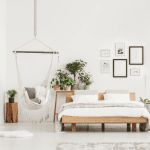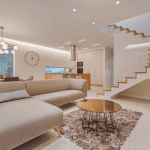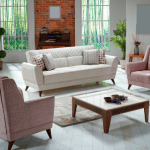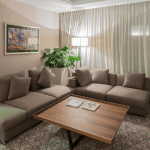
In the realm of home decor, colorful furniture has emerged as a vibrant trend that not only revitalizes any living space but also reflects the homeowner’s personality and style. As we delve into the significance of integrating vivid colors into our furnishings, it’s essential to appreciate the balance and energy that the right hues can bring to our environments. This guide will explore how to effectively incorporate colorful furniture into your home, ensuring each room blossoms with life and charm.
The Psychological Impact of Color in Home Decor
Color is a powerful tool in interior design, influencing mood and setting the tone for a space. Each color carries a different psychological value; for instance, blues are calming and promote clarity, making them ideal for bedrooms and bathrooms, while reds are energizing and passionate, suited for dynamic areas like living rooms and kitchens. Incorporating colorful furniture is an effective way to harness these emotional impacts. A lime green bookshelf can invigorate a study area, or a deep blue couch can bring tranquility to your living room. Understanding the psychology of color can help in making deliberate choices that enhance your living experience.
Choosing the Right Colorful Furniture for Your Space
Selecting the right color furniture involves more than just following trends; it requires consideration of the room’s size, natural light, and existing decor. In smaller rooms, lighter, brighter furniture can make the space feel larger, whereas dark, rich colors add depth and sophistication to larger areas. It’s also crucial to consider the amount of natural light a room receives. Lighter colors might wash out in well-lit spaces, while darker hues can absorb light, making them ideal for sunnier spots. Balancing colorful pieces with neutral backgrounds or accents also prevents a room from feeling overwhelming, maintaining an elegant harmony.

Trends in Colorful Furniture
Staying abreast of furniture color trends can provide fresh ideas and inspiration. Currently, there is a strong inclination towards pastel colors such as blush pink, baby blue, and mint green, which bring a soft, calming vibe to interiors. Bold and saturated colors like royal blue and emerald green are also popular, often used in statement pieces that become the focal point of a room. Modular furniture with interchangeable parts in various colors offers flexibility and the ability to adapt to changing trends and personal tastes.
Integrating Colorful Furniture into Various Room Settings
Living Room: A vibrant sofa in velvet teal or a set of mustard yellow armchairs can instantly lift the ambiance of your living room. Pair these with neutral walls and floors to let the furniture shine as the room’s centerpiece. Bedroom: For a more personal retreat, choose serene colors like soft lavender or sky blue for bed frames or wardrobes. These colors promote relaxation and can complement bolder accents like cushions or curtains. Kitchen and Dining Area: Brightly colored chairs or a unique, colorful island can invigorate these spaces where families gather and socialize. Opt for durable, easy-to-clean materials that can handle the hustle of daily life while adding aesthetic value.
Care and Maintenance of Colorful Furniture
Maintaining the vibrant look of your colorful furniture is crucial for ensuring it continues to brighten your space over time. Different materials require different care strategies. For instance, wooden pieces might need occasional polishing to maintain their sheen, while upholstered items could benefit from regular vacuuming and professional cleaning to prevent the colors from becoming dull. Use specially formulated cleaners for leather to prevent fading and cracking. Always check the manufacturer’s care instructions to avoid damaging the material. Placing furniture away from direct sunlight can also prevent colors from fading prematurely, preserving the lively hues for years to come.

DIY Tips for Adding Color to Your Furniture
If you’re looking for a budget-friendly way to incorporate color into your space, DIY projects can be a satisfying approach. Simple tasks like painting a wooden chair in a bright new shade or adding a vibrant slipcover to an old sofa can make a significant impact. When choosing paints, opt for those that are durable and suitable for furniture use, ensuring they can handle wear and tear. Fabric choices for reupholstering should similarly balance aesthetics with functionality, especially in high-use areas. These small projects not only refresh your space but also provide a personal touch to your home decor.
Case Studies/Success Stories
To illustrate the transformative power of colorful furniture, consider the case of a recent home makeover in Austin, Texas. The homeowner added a bright red sofa and turquoise coffee table to their living room, which previously featured muted colors. The result was stunning—the room felt more inviting and energetic. The colorful pieces acted as focal points, drawing the eye and making the space seem more cohesive. Photos of the transformation highlighted how these vibrant additions could completely change the perception of the space, making it feel larger and more welcoming.
Conclusion
Integrating colorful furniture into your home decor is not just about following trends; it’s about creating a space that resonates with your personality and meets your emotional needs. The right colors can transform a dull room into a lively sanctuary, making your home a source of joy and comfort. As we’ve explored, there are numerous ways to incorporate colors, whether through direct purchases, trend awareness, or DIY projects, each providing unique benefits to your living environment.






